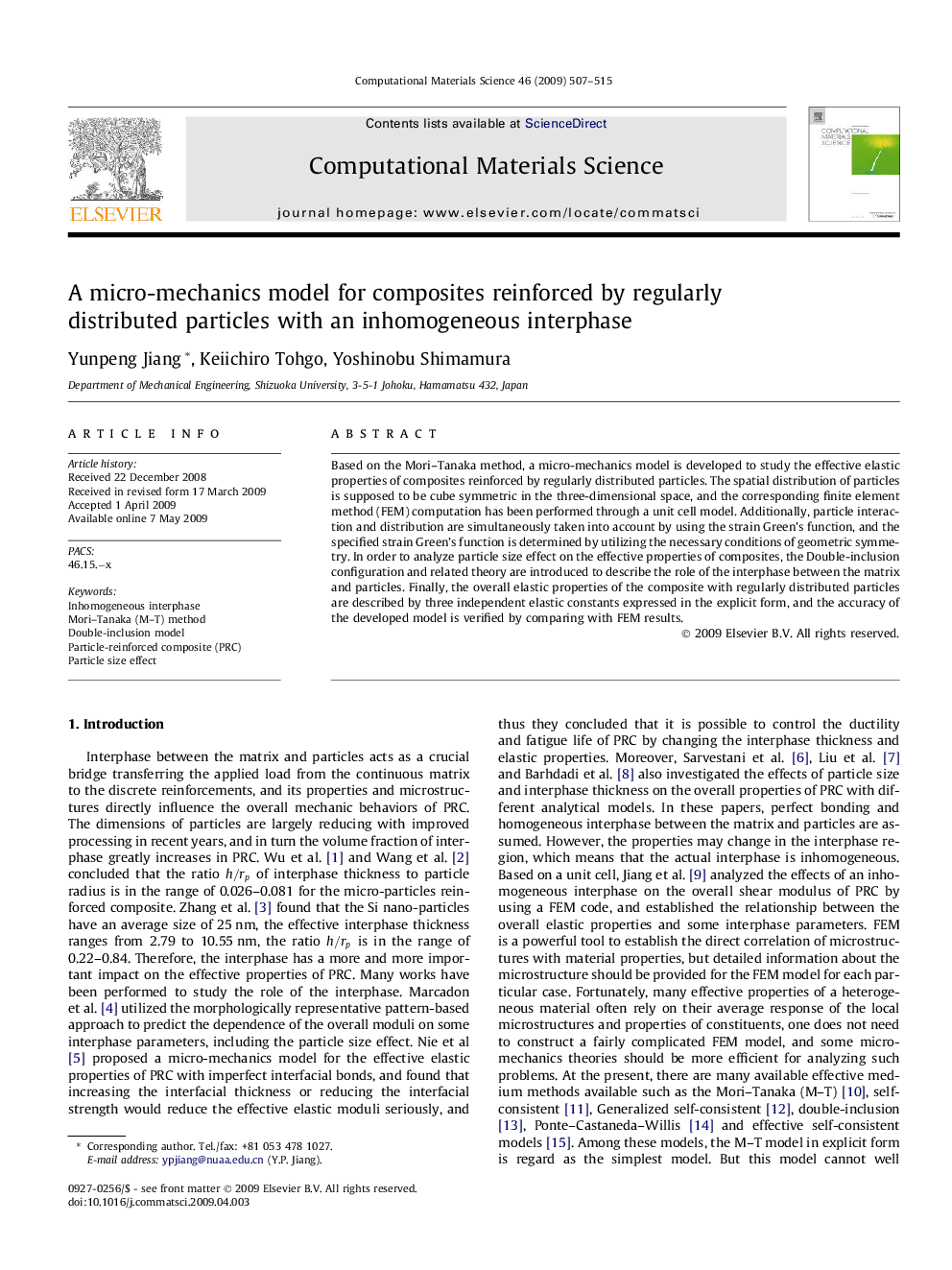| Article ID | Journal | Published Year | Pages | File Type |
|---|---|---|---|---|
| 1563564 | Computational Materials Science | 2009 | 9 Pages |
Abstract
Based on the Mori-Tanaka method, a micro-mechanics model is developed to study the effective elastic properties of composites reinforced by regularly distributed particles. The spatial distribution of particles is supposed to be cube symmetric in the three-dimensional space, and the corresponding finite element method (FEM) computation has been performed through a unit cell model. Additionally, particle interaction and distribution are simultaneously taken into account by using the strain Green's function, and the specified strain Green's function is determined by utilizing the necessary conditions of geometric symmetry. In order to analyze particle size effect on the effective properties of composites, the Double-inclusion configuration and related theory are introduced to describe the role of the interphase between the matrix and particles. Finally, the overall elastic properties of the composite with regularly distributed particles are described by three independent elastic constants expressed in the explicit form, and the accuracy of the developed model is verified by comparing with FEM results.
Related Topics
Physical Sciences and Engineering
Engineering
Computational Mechanics
Authors
Yunpeng Jiang, Keiichiro Tohgo, Yoshinobu Shimamura,
